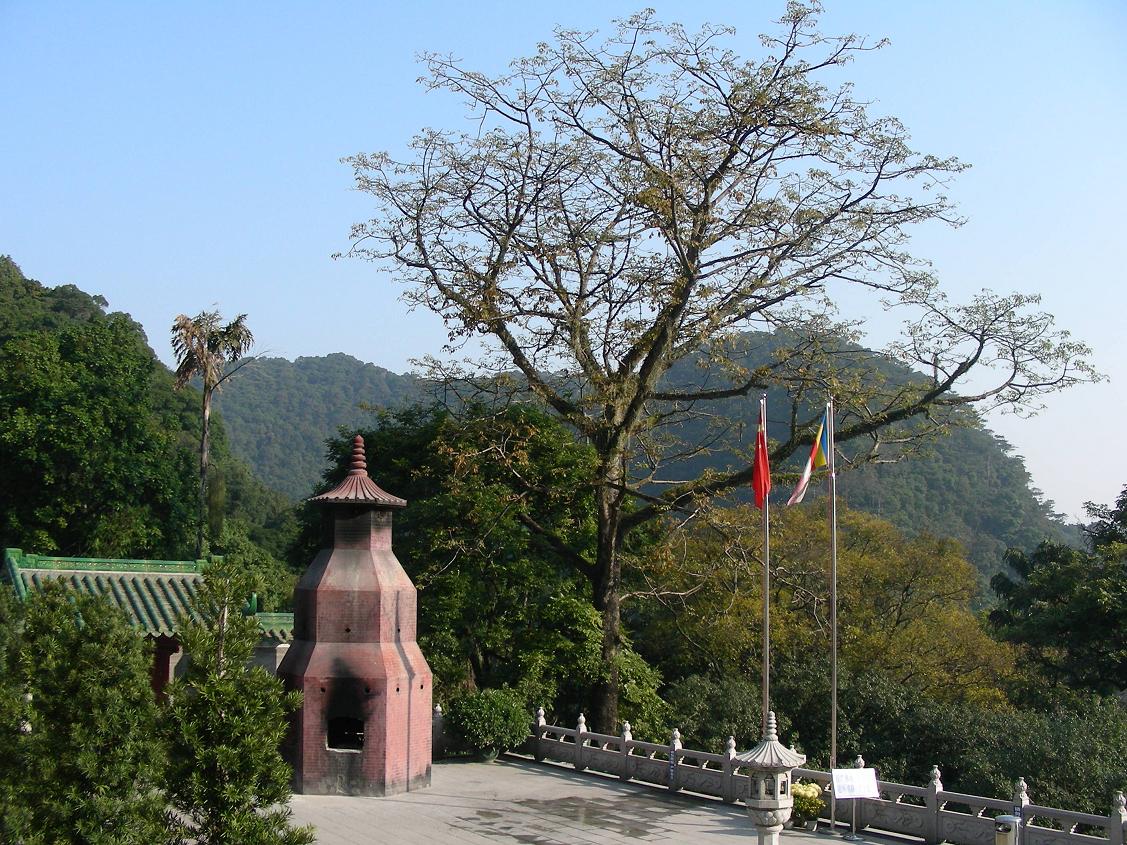Introduction
 One of the most popular birding spots in Guangdong, easily reached from Hong Kong and a good place to see ‘Chinese’ Barbet, Silver Pheasant and a number of other species not found in Hong Kong.
One of the most popular birding spots in Guangdong, easily reached from Hong Kong and a good place to see ‘Chinese’ Barbet, Silver Pheasant and a number of other species not found in Hong Kong.
Key Species
‘Chinese’ Barbet, Silver Pheasant. Lesser-necklaced Laughingthrush has also been recorded here but like everywhere is difficult to find. There is one record of Rufous-gorgetted Flycatcher.
Other Species
Crested Serpent Eagle, Crested Goshawk, Black Baza, Chinese Francolin, Chinese Bamboo Partridge, Emerald Dove, Large Hawk Cuckoo, Indian Cuckoo, Drongo Cuckoo, Collared Owlet, Oriental Scops Owl, Bay Woodpecker, Speckled Piculet, Short-billed Minivet, Mountain Bulbul, Chestnut Bulbul, Brownish-flanked Bush Warbler, Blyth’s Leaf Warbler, Golden Spectacled Warbler, Mountain Tailorbird, Hill Prinia, Rufescent Prinia, Pygmy Wren Babbler, Striated Yuhina, Black-throated Tit, Yellow-cheeked Tit, Grey Treepie, Plain Flowerpecker.
Other Wildlife
Striped squirrels tamiops sp. are quite common here.
Birding
Birding from the Qingyun monastery can be very rewarding giving excellent views of ‘Chinese’ Barbet in the fig and bombax trees. Silver Pheasant is more easily found on the reserve circuit path away from the main tourist area. Plain Flowerpecker is very obvious in spring, as are Hainan Blue Flycatchers. Slaty-backed Forktails are found on the main stream leading down into the hotel area, although they appear to have become less common in recent years. White-crowned Forktail is an uncommon winter visitor. Grey-capped and Grey-headed Woodpeckers used to occur here but have not been seen since the 1980s. Spot-necked Babbler and Burmese Shrike have also been recorded here but there are no recent records.
Habitat and Vegetation
Ding Hu Shan was designated as a reserve in 1956 in recognition of its quality sub-tropical forest located on the Tropic of Cancer. Historically protected from destruction by the Buddhist monasteries on the south side of the mountain, the forest remains very good. Although the mountain reaches up to just over 1,000m the highest accessible paths rise up to 360m. The best forest is found around the Qingyun monastery 庆云 寺and in parts of the reserve area, but the higher reaches of the mountain are off-limits and remain unexplored by foreign birdwatchers. Characteristic tree species include Anthocephalus chinensis, Canarium pimela, Podocarpus fleuryi, Pterospermum heterophyllum, Ficus nervosa and wild litchi, Litchi chinensis. The valleys are filled with luxuriant palms and bamboo species.
Getting there
See the Zhaoqing section for details of how to get there from Hong Kong. Ding Hu Shan is easily reached in half an hour from Zhaoqing 肇庆via public bus #21 from the Seven Star Crag 七星岩 archway. A taxi will cost about Rmb80. A ticket to access the mountain costs Rmb50.There are many hotels in Ding Hu Shan town outside the reserve, costing around Rmb150 for a double room. Inside the ticketed area there are a few places to stay of higher quality. The Qingyun monastery also has an attached hotel that is comfortable but quite expensive due to its tourist popularity. Rooms cost Rmb230-380 though dormitory accommodation for around Rmb50 is also available. No public transport goes to the monastery so you will have to arrange private transport or lug your bags 200m up the steep steps.
In order to access the reserve area a letter of permission can be easily obtained from the reserve office for an additional Rmb20. Under new rules permits can only be obtained from June to October inclusive. Unfortunately getting a permit is very important as the volume of tourists and tourist buses has steadily increased over the years making birding from the open area less good. The reserve office is located on the right-hand side of the road about 200m beyond the entrance archway. There is a very prominent modern steel gateway with guard post and the office is in the building furthest from the main road. Since the entrances to both ends of the reserve circuit path are guarded, it is essential to get this letter. Get it the previous day if you want to start early in the morning. The office has an exhibition room, newly stocked with specimens including Grass Owl and Lesser Necklaced Laughingthrush, as well as various mammals.
The entrances to the reserve area are fairly clearly marked on roadside maps. The lower entrance is on the left of the main road about 50m after the entrance archway. Follow the dirt track past a hospital on the right. The guard office is another 15 minutes walk along the track. The upper entrance is about 100m back behind the Qingyun monastery. Go through a metal gateway and follow steps up a steep bank. At both entrances you will be required to sign in the entrance book and may be requested to use the services of a guide for a fee. Since the paths are very clear, a guide is unnecessary. Although the path splits in several places these strands all head in the same direction so it does not matter which one you take. Even so the reserve brochure has a reasonably clear map so it is worth buying a copy from the reserve office or one of the guard posts.
General Information
County: Zhao Qing Area: 11 sq. kmAltitude: 200-850m Location: 23°15’N, 112°30’E
Disturbance: some tourist pressure though the core area is now very well protected.